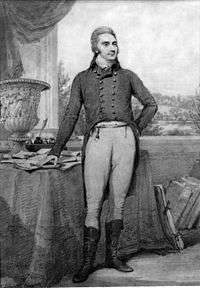House of Longe

Longe (/ˈɪoʊŋɡ/; Old Norman: le Longe or le Long) is an English and French aristocratic household, descending from the House of Bourbon-Préaux, a cadet branch of the House of Bourbon. The surname is of Anglo-Norman origin. The name has been linked primarily to a large noble Norman family that settled in Wraxall, Wiltshire, United Kingdom from Normandy alongside William the Conqueror in 1066. By the mid 13th century the Long(e) family had grown significantly and subsequently split into four senior branches: the Wiltshire line, who became the Long Viscounts, Long baronets, Tylney-Long baronets, Gisborough Barons and the Earls of Mornington (beginning with William Pole-Tylney-Long-Wellesley, 4th Earl of Mornington); the Norfolk line, whose descendants settled at Spixworth Park in 1693; the Irish line; and the Suffolk line, who became the Farnborough Barons.
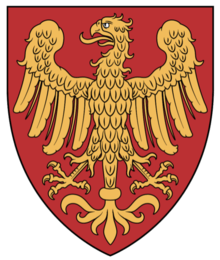
Origins
The House of le Longe are believed to be of Viking origin. The Vikings landed in the Orkneys and Northern Scotland about the year 870 A.D., under their chief, Sigurd the Stout. Later, under their Jarl, Rollo, they invaded France about 940 A.D. After Rollo laid siege to Paris, the French King Charles the Simple finally conceded defeat and granted northern France to Rollo. Rollo became the first Duke of Normandy, the territory of the Northmen. Here, the le Longes settled in Rouen,a city on the River Seine in the Seine-Maritime department in the region of Normandy. They were descended from a Norman noble of the House of Bourbon-Préaux in Normandy with the name le Longe deriving from someone who had long arms and legs, or tall. Many alternate spellings of the name were found, linking to the Norman nobles at the Battle of Hastings.
Long baronets, of Whaddon (1661-1710)
The Long Baronetcy, of Whaddon in the County of Wiltshire, was created in the Baronetage of England on 26 March 1661 for the politician Walter Long. He was succeeded by his son, the second Baronet. He was unmarried and the title became extinct on his death in 1710.
Tylney-Long baronets, of Westminster (1662 - 1794)
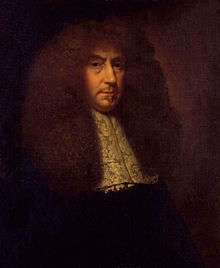
The Long, later Tylney-Long Baronetcy, of Westminster in the County of London, was a title in the Baronetage of England. It was created in 1662 for Robert Long, with remainder in default of male issue of his own to his nephew James Long and the heirs male of his body. He was the son of Sir Walter Long. Long never married and was succeeded according to the special remainder by his nephew, James, the second Baronet. He was the son of Sir Walter Long. Three of Sir James's grandsons, the third, fourth and fifth Baronets, all succeeded in the title. The latter represented several constituencies in the House of Commons. He married Lady Emma, daughter of Richard Tylney, 1st Earl Tylney (see Earl Tylney). Their son, the sixth Baronet, succeeded to the substantial Tylney estates, including Wanstead Park, on the death of his maternal uncle in 1784 and assumed the additional surname of Tylney. His only son, the eighth Baronet, died young in 1805 and the baronetcy became extinct.
Catherine Tylney-Long, daughter of the seventh Baronet and sister of the eighth and last Baronet, inherited the family estates. She married William Pole-Wellesley, 4th Earl of Mornington, who assumed the additional surnames of Tylney and Long. See Earl of Mornington fur further history of this title.
- Sir Robert Long, 1st Baronet
- Sir James Long, 2nd Baronet
- Sir Richard Long, 3rd Baronet
- Sir Giles Long, 4th Baronet
- Sir James Long, 5th Baronet
- Sir Robert Long, 6th Baronet
- Sir James Tylney-Long, 7th Baronet
- Sir James Tylney-Long, 8th Baronet
Barons Farnborough; First Creation (1826 - 1838)
In 1820 King George IV appointed Charles Longe a Knight of the Bath, and on his retirement from political life in 1826 he was raised to the peerage as Baron Farnborough, of Bromley-Hill-Place, in the county of Kent.[1] Long was elected FRS in 1792, FSA in 1812, and was given an honorary LLD by Cambridge University in 1833 where he had studied at Emmanuel College, Cambridge, matriculating in 1779. It was here at Cambridge, where he was friends with William Pitt.
Barons Gisborough (1917-)
Baron Gisborough, of Cleveland in the County of York,[2] is a title in the Peerage of the United Kingdom. It was created in 1917 for the Conservative politician Richard Chaloner, who had previously represented Westbury (also known as Wiltshire West) and Abercromby in the House of Commons. Born Richard Long, the son of Richard Penruddocke Long, he had assumed by Royal licence the surname of Chaloner in lieu of Long in 1881, as a condition of inheriting the Guisborough estate and Gisborough Hall from his maternal great-uncle, Admiral Thomas Chaloner. The latter was a descendant through his mother of Robert de Brus, who founded Gisborough Priory in 1119. Lord Gisborough's eldest son and heir Richard Godolphin Hume Long Chaloner was accidentally killed in France in 1917 while guarding German prisoners of war, and is buried at Calais. He was therefore succeeded by his second son, the second Baron. As of 2011 the title is held by the latter's son, the third Baron, who succeeded in 1951. He notably served as Lord Lieutenant of Cleveland from 1981 to 1996. The title remains strongly linked with the town of Guisborough.
The prominent Conservative politician Walter Long, 1st Viscount Long, was the elder brother of the first Baron.
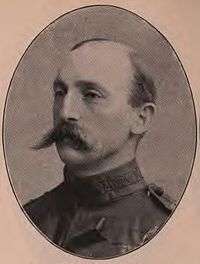
- Richard Chaloner, 1st Baron Gisborough
- Thomas Chaloner, 2nd Baron Gisborough
- Richard Chaloner, 3rd Baron Gisborough
Viscounts Long, of Wraxall (1921-)
Viscount Long, of Wraxall in the County of Wiltshire, is a title in the Peerage of the United Kingdom. It was created in 1921 for the Conservative politician Walter Long, who had previously served as Member of Parliament, President of the Board of Agriculture, President of the Local Government Board, Secretary of State for the Colonies and First Lord of the Admiralty. His grandson, the second Viscount (son of Brigadier General Walter Long) was killed in action in the Second World War. He was succeeded by his uncle, the third Viscount. He had earlier represented Westbury in Parliament as a Conservative. As of 2012 the title is held by his son, the fourth Viscount. He served as a government whip from 1979 to 1997 in the Conservative administrations of Margaret Thatcher and John Major. However, Lord Long lost his seat in the House of Lords after the passing of the House of Lords Act 1999.

- Walter Long, 1st Viscount Long
- Walter Long, 2nd Viscount Long
- Richard Long, 3rd Viscount Long
- Richard Long, 4th Viscount Long
Earls of Mornington (1760; Reverted)

Catherine Tylney-Long, daughter of the seventh Baronet (see Tylney-Long baronets) and sister of the eighth and last Baronet, inherited the family estates. She married William Pole-Wellesley, 4th Earl of Mornington, who assumed the additional surnames of Tylney and Long.
The 4th Earl of Mornington's wife was known in fashionable London society as "The Wiltshire Heiress",[4] Catherine Tylney-Long was believed to be the richest commoner in England. Her estates in Essex, Hampshire, and Wiltshire, were said to be worth £40,000 per year in rents (£3,500,000 in 2016). She also had financial investments in hand worth £300,000 (£28,000,000 in 2016) and had been sought in marriage by the Duke of Clarence, later King William IV. See Earl of Mornington for further history of this title.
- William Pole-Tylney-Long-Wellesley, 4th Earl of Mornington
- William Pole-Tylney-Long-Wellesley, 5th Earl of Mornington
Norfolk, England branch

Estates:
- Abbots Hall, Stowmarket, Suffolk.
- Dunston Hall, Norfolk.
- Hingham Hall, Norfolk.
- Reymerston Hall, Norfolk.
- Spixworth Park, Norfolk
- Yelverton Hall, Norfolk.
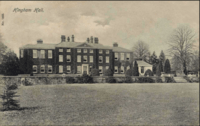
.png)

- 1641 - Robert Longe, of Reymerston Hall. Amitted to Gonville & Caius College, Cambridge in 1599. Migrated to Trinity Hall, Cambridge, as scholar, 06 Jul., 1603. Graduated with LL.B in 1606. Admitted at Lincoln's Inn, 17 November 1607.[3]
- 1644 - Robert Longe, of Fowlden. Educated at Gonville & Caius College, Cambridge, matriculated 15 December 1612.[3]
- 1752 - Francis Longe, of Spixworth Hall (b. 1726 - d. 1776). Educated at Westminster School and Emmanuel College, Cambridge.[3]
- 1757 - Israel Longe, of Dunston Hall. Educated Corpus Christi College, Cambridge in 1656. Admitted to Middle Temple, June 30, 1756.
- 1726 - Francis Longe, of Spixworth Hall, and Reymerston Hall.
- 1786 - Francis Longe, of Spixworth Hall.
- 1975 - Desmond Evelyn Longe of Woodton Grange, Bungay, Suffolk. President of the Norwich Union Insurance Company during the 1970s and appointed Chairman by 1980. S.O.E agent. Codename, Refraction. Commander of the inter-allied mission Eucalyptus (1944). Mission Eucalyptus served as the inspiration for the greatest spy fictional hero of all time, James Bond, codenamed, secret agent 007.[4]
- 1984 - Nicholas Longe of Grange Farm, Hasketon, Woodbridge.
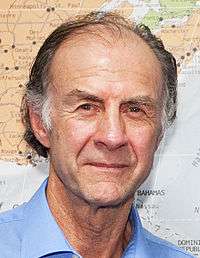
Notable descendants:
- William of Wykeham (1320 or 1324 – 27 September 1404), son of John Longe of Wickham, served as Bishop of Winchester and Chancellor of England. He founded New College Oxford and New College School in 1379, and founded Winchester College in 1382. Wykeham (Longe) also served as the clerk of works when much of Windsor Castle was built. Descendants of Wykeham and distant cousins to the Longe family include the Twisleton-Wykeham-Fiennes family whose descendants include explorer, Ranulph Fiennes and actor, Ralph Fiennes.[5][6]
- John Longe (b. 1549 - d. 1589). Scholar at Eton College and later admitted to King's College, Cambridge in 1564.[3] Appointed Archbishop of Armagh, Ireland.[7][8] Elected member of the Privy Council of Ireland in 1589.
- Rev John Longe (b. 25 July 1731 - d. 18 Sept 1806). Oppidan at Eton College. Admitted age 17 to Magdalene College, Cambridge in 1748. Matric. 1748-9 ;B.A. 1752 ;M.A. 1756. Ordained deacon at Cambridge on 24 March 1754 by Bishop of Chester.[3] Chaplain to King George III.
- Rev John Longe (b. 15 Apr 1765 – d. 13 Mar 1834). Educated at Norwich School and Corpus Christi College, Cambridge[3] Vicar of Coddenham. 1789, ordained priest at Norwich Cathedral. Norfolk County magistrate. Author of The Diary of John Longe, Vicar of Coddenham (1765–1834), edited by Michael Stone, general editor Richard Wilson, 2008.[9]
- Rev Robert Longe (7 Dec 1800 - 6 Oct 1873) son of the Rev John Longe (b. 15 Apr 1765 – d. 13 Mar 1834). Educated at Ipswich School and Gonville and Caius College, Cambridge. Longe was a landscape artist. He was ordained deacon at Norwich in 1823 and made priest at Norwich Cathedral on June 19, 1824. Succeeded his father, Rev John Longe as vicar of Coddenham and Crowfield, Suffolk between 1834-73. Also served as Rural Dean of Bosmore in 1843.[10] Grandfather of the artist William Verner Longe.[11]
- Francis Davy Longe (b. 25 Sept 1831 – d. 20 Sept 1905), Inspector Local Government Board, First-Class cricketer, descendant of Pocahontas. Educated Harrow School, Oriel College, Oxford and Inner Temple. Author of An Inquiry into the Law of 'Strikes', 1860. A Refutation of the Wage-Fund Theory of Modern Political Economy as enunciated by Mr. Mill, MP and Mr. Fawcett, M.P., 1866. A Critical Examination of Mr. George's Progress & Poverty and Mr. Mill's Theory of Wages, 1883. Lowestoft in Olden Times.[12]
- Henrietta Charlotte Longe, youngest daughter of Robert Bacon Longe, J.P., (b. 30 Mar 1830 - d. 20 Jan 1911) married Charles Arthur Bathurst Bignold, son of Lieutenant-Colonel Charles Bignold and great-grandson of Thomas Bignold, founder of the Norwich Union Fire Insurance Company.
- Col. Francis Bacon Longe, of Spixworth Park, C.B., J.P, (b. 31 Oct 1856 - d. 2 June 1922) Lord of the Manor of Spixworth Park.[13]
- William Verner Longe (b. 27 April 1857 - d. 19 Sept 1924), artist. Works include 'Eclipse Stakes 1893 - Orme wins again', 'The Grand National 1899 - Over the water', 'The Princess of Wales Stakes 1896' and 'Jacana 1923'.[14]
- John Charles Longe (b. 1859 - d. 21 May 1939) Educated at Sherborne School and Jesus College, Cambridge. Ordained deacon (Worcester) 1882; priest, 1883; C. of Upton-on-Severn, Worcs., 1882-7. V. of Linton, Cambs., 1887-1905, R. of Catton with Stamford Bridge, Yorks., 1905–19, R. of Yelverton with Alpington, Norfolk, 1919-39. Holder of Royal Humane Society bronze medal (1887) for saving life.[3]
- John Norman Sullivan Longe, OBE.[15]
Wiltshire, England branch


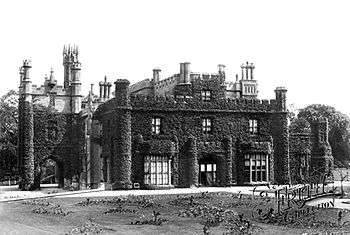
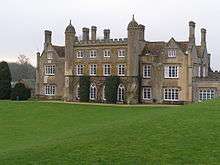
Estates:
High Sheriffs of Wiltshire
- 1322 – Walter le Longe
- 1332 – Gifford le Long
- 1483 - Henry Long (died 1490), of Wraxall
- 1500 - Sir Thomas Long of Draycot (c. 1451–1508) of South Wraxall and Draycot
- 1506 - Sir Thomas Long of Draycot (c. 1451–1508) of South Wraxall and Draycot
- 1511: Henry Long, Kt of Draycot Cerne (1st term)
- 1525: Sir Henry Long, Kt of Draycot Cerne (2nd term)
- 1536: Sir Henry Long, Kt of Draycot Cerne (3rd term)
- 1541: Sir Henry Long, Kt of Draycot Cerne (4th term)
- 1574: Sir Robert Long of Wraxall and Draycott
- 1600: Sir Walter Long, Kt of South Wraxall and Draycot
- 1623: Gifford Long of Rowde Ashton
- 1627: Sir Walter Long, Bt of Whaddon
- 1644: Sir James Long, Bt, of Draycot Cerne
- 1653: Thomas Long, of Little Cheverell
- 6 November 1667: John Long, of Little Cheverell[11]
- 1672: Sir Walter Long, Bt of Whaddon
- 1703: Richard Long of Collingbourne
- 1704: Walter Long of South Wraxall
- 1726: Henry Long, of Melksham
- 1745: Walter Long, of Salisbury, Wiltshire, and Preshaw, Hampshire
- 1764: Walter Long (of South Wraxall)
- 1794: Richard Godolphin Long, of Rood Ashton
- 1819: John Long, of Monkton Farleigh
Lord Lieutenants of Wiltshire
- Walter Long, 1st Viscount Long 3 March 1920 – 26 September 1924
Deputy Lieutenants of Wiltshire
- Sir Walter Long (c. 1565 - 1610)
- Walter Long (1793 – 1867)
- Walter Hume Long, 1st Viscount Long (1854 - 1924)
- Richard Long, 3rd Viscount Long (1892 – 1967)
Notable descendants
- Anne Long
- Gifford Long
- Henry Long (died 1556)
- Henry Long (died 1490)
- John Long of Draycot Cerne
- Beeston Long
- Charles Edward Long
- Charlotte Long
.jpg)
- Edward Long
- Lislebone Long
- Richard Long (died 1730)
- Richard Long (died 1760)
- Richard Godolphin Long
- Richard Penruddocke Long
- Robert Ballard Long
- Samuel Long
- Walter Long (c. 1594 – 1637)
- Walter Long (1793 – 1867)
- Walter Long (British Army Officer)
- Walter Long (MP 1701 – 02)
- Walter Long (of South Wraxall)
- Walter Long (of Preshaw)
- William Long (surgeon)
- Richard Long (courtier)
- Richard Long (politician)
- Robert Long (soldier)
- Thomas Long of Draycot
Further reading
References
- ↑ https://www.thegazette.co.uk/London/issue/18259/page/1478
- ↑ London Gazette no. 30150. p. 6286
- 1 2 3 4 5 6 7 "Search for surname LONGE". ACAD - A Cambridge Alumni Database. Retrieved 20 September 2016.
- ↑ Trevor Heaton. "The amazing story of a Norfolk soldier and an operation which it is claimed provided inspiration for James Bond - News - Eastern Daily Press". Edp24.co.uk. Retrieved 2016-09-20.
- ↑ http://www.dailymail.co.uk/news/article-1220968/My-family-misfits--Britains-intrepid-explorer-Ranulph-Fiennes-tells-stories-ancestors.html
- ↑
- ↑ "Registrum Regale: sive, catalogus: Prćpositorum utriusque Collegii Regalis ... - Eton College - Google Books". Books.google.com. Retrieved 2016-09-20.
- ↑ "Alumni Etonenses: Or, A Catalogue of the Provosts & Fellows of Eton College ... - Thomas Harwood - Google Books". Books.google.com. Retrieved 2016-09-20.
- ↑ John Longe; Michael John Stone (2008). The Diary of John Longe (1765-1834), Vicar of Coddenham. Boydell & Brewer Ltd. ISBN 978-1-84383-357-4.
- ↑ "Longe, Robert". ACAD - A Cambridge Alumni Database. Retrieved 20 September 2016.
- ↑ "Suffolk Painters". Suffolk Painters. Retrieved 2016-09-20.
- ↑ "The Home of CricketArchive". cricketarchive.com. Retrieved 2016-03-30.
- ↑ https://www.thegazette.co.uk/London/issue/28388/supplement/4476/data.pdf
- ↑ "Suffolk Painters". suffolkpainters.co.uk. Retrieved 2016-04-03.
- ↑ "Person Page". thepeerage.com. Retrieved 2016-04-03.
